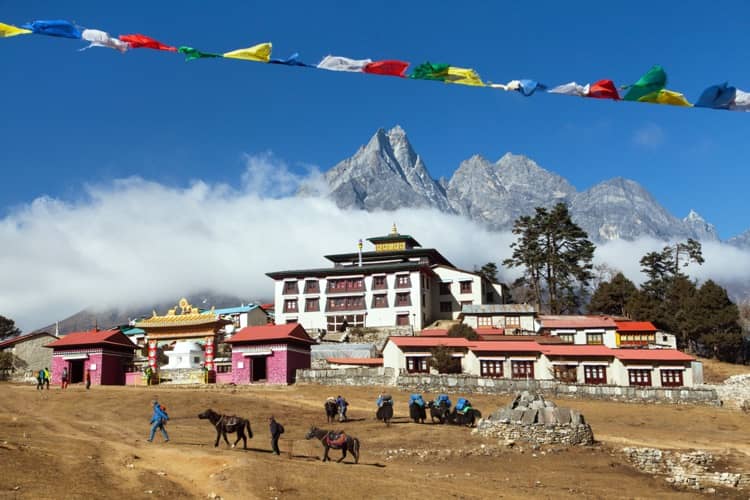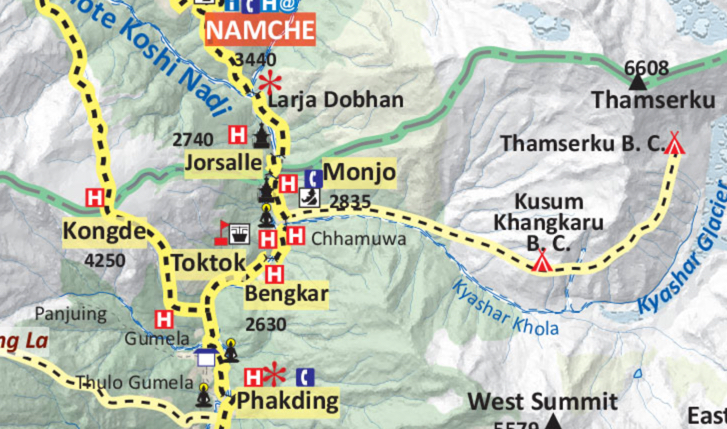Tengboche Everest View Trek
- Satisfied Client
- Personalised Guide
- Instant Response
Get Instant Response:
+977-9851329446 (Whatsapp)
| Starts at: Lukla | Ends at: Lukla |
| Trek Region: Everest | Transport: Flight |
| Duration: 9 Days | Trip Grade: Gentle |
| Max Altitude: 3956 m/ 12979 ft | Accommodation: Teahouse |
Everest View Trek Highlights
- Catch the views of Mt. Everest, Nuptse, Lhotse, Ama Dablam, and Thamserku in 5 days trek
- Walk to the premise of Tengboche monastery and collect blessings from the Buddhist Lamas
- Explore the popular business hub – the Namche Bazar in the Everest region
- Connect with the culture and lifestyles of the Sherpa people
- Spend some time in the school in Khumjung village established by Sir Edmund Hillary
The Everest View Trek is perfect for those people who have less time or who do not want to trek Everest Base Camp.
It does, however, provide a good insight into the lives of the local people from the Everest Region as well as stunning views of Mount Everest and surrounding mountains and a trip to the famous Tengboche Monastery.
On most days walking will take around 5 hours and although the route is still at altitude it is nowhere near as high as many of the other treks.
Never exceeding 4,000 m, it is a good option for those who are of average fitness. The trek starts and ends by flight to/from Lukla Airport.
The trekking route goes through alpine forests and interesting villages along the glacier-fed Dudh Koshi and Bhote Koshi rivers to a market town with a name that conjures up pictures of red-cheeked Sherpa children and generations of mountain expeditions from around the world – Namche Bazaar.
Namche is the entrance to Sagarmatha National Park, home of the elusive snow leopard and red panda. This area has been included in the Sacred Himalayan Landscape initiative by the World Wildlife Fund (WWF) for obvious reasons!
Namche is also a bustling market town where visitors can see Sherpa people at work, other trekking and mountaineering groups stock up on supplies for their expeditions, use the internet, drink good coffee, and eat in great restaurants!
From Namche Bazaar, it is possible to take a short trek to Khumjung Village to visit the school set up by Sir Edmund Hillary, the first man to successfully summit Mount Everest in 1953.
By setting up this school, Sir Edmund gave back to the Sherpa community, who continue today to be the backbone of any expedition to Everest. If you are lucky, you might bump into the sons of Sir Edmund and Tenzing Norgay Sherpa, who still lead trekking groups in the area.
Another highlight of this trek is a visit to Tengboche Monastery. At 3,867m, it is the largest monastery in the Khumbu Region. Unfortunately, the monastery was extensively damaged by the earthquakes in 2015.
However, the panoramic views from the monastery area are still spectacular and include views of Mount Everest, Nuptse, Lhotse, Ama Dablam, and Thamserku.
With all this natural beauty, it is easy to see why the biggest monastery in the region was built on this spot. Both natural and spiritual beauty has always drawn people to this area.
Interestingly, the Tibetan and Sherpa name of Mount Everest is Chomolungma, or Mother Goddess of the Universe.
In brief, this short trek is a perfect way to experience the sights and sounds of the Khumbu Region and Mount Everest without the muscle-aching ascents and descents prevalent on other treks in this region. If you still can’t do this trek but want to see Everest, there is a helicopter tour to Everest.
Having said that, this is the Everest Region, so not just a stroll in the park!
Itinerary
Day 1: Arrival in Kathmandu
Kathmandu – 1300 m / 4265 ft
Day 2: Kathmandu to Lukla (Flight) to Phakding
Phakding – 2651 m / 8697 ft – 3 hr
Day 3: Phakding to Namche Bazaar
Namche Bazaar – 3438 m / 11279 ft – 5 to 6 hours
Day 4: Acclimatization day
Namche Bazaar – 3438 m / 11279 ft – 5 to 6 hours
Day 5: Namche Bazaar to Tengboche
Tengboche – 3956 m / 12979 ft – 5 hours
Day 6: Tengboche to Monjo
Monjo – 3870 m / 12696 ft – 6 hour
Day 7: Monjo to Lukla
Lukla – 2840 m / 9317 ft – 4 hour
Day 8: Lukla to Kathmandu (Flight)
Kathmandu – 1380 m / 4527 ft – 30 min
Day 9: Departure
Departure
Not satisfied with this Itinerary?
Are you interested on planning custom trip? It only takes 2 minutes.
Includes
- Local transfers for your international flight x 2 (arrival/departure)
- Local transfers for your domestic flight x 2
- Kathmandu Lukla Kathmandu Flight
- Sagarmatha National Park Entry Permit and Local Entry Permits
- Guide for 7 days
- Porter for 6 days
- 2 nights accommodation in a Kathmandu hotel (Bodhi Boutique or similar)
- 6 nights accommodation in mountain teahouses
- Staff insurance and necessary ground transport for support staff
- 7 x set breakfast,6 x set lunch and 6 x set dinner while on the trek
- Lunch and dinner in Kathmandu
- Personnel expenses of any kind and travel insurance
Everest View Trek Map
Related Trips in Everest Region
Everest Base Camp Trek | Gokyo Lake Trek | Gokyo Chola Pass EBC Trek | Everest Three Pass Trek | Jiri To Everest Base Camp Trek | Island Peak Climbing | Lobuche Peak Climbing | Mera And Island Peak Climbing | Mera Peak Climbing | Baruntse Expedition | Everest Helicopter Tour

